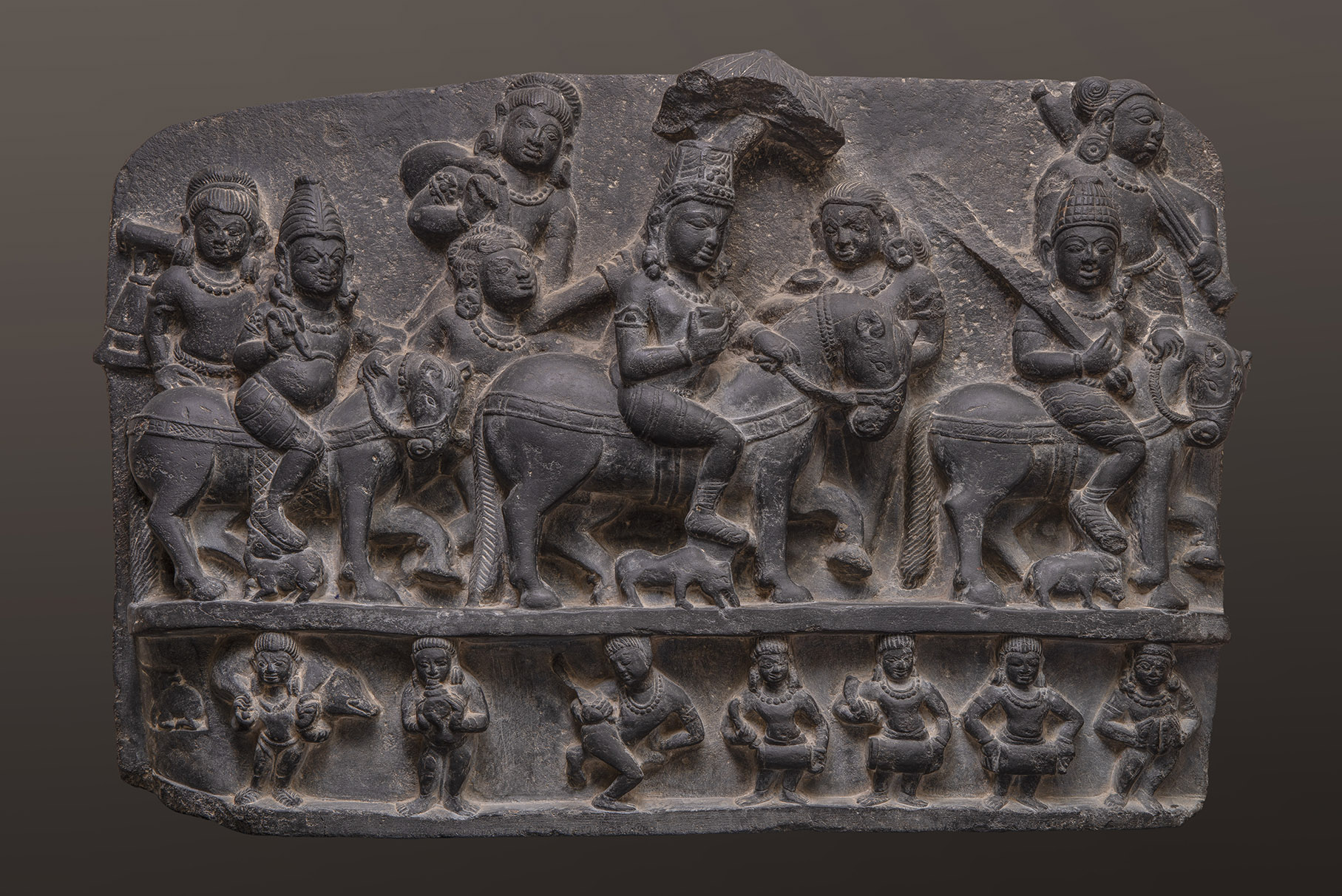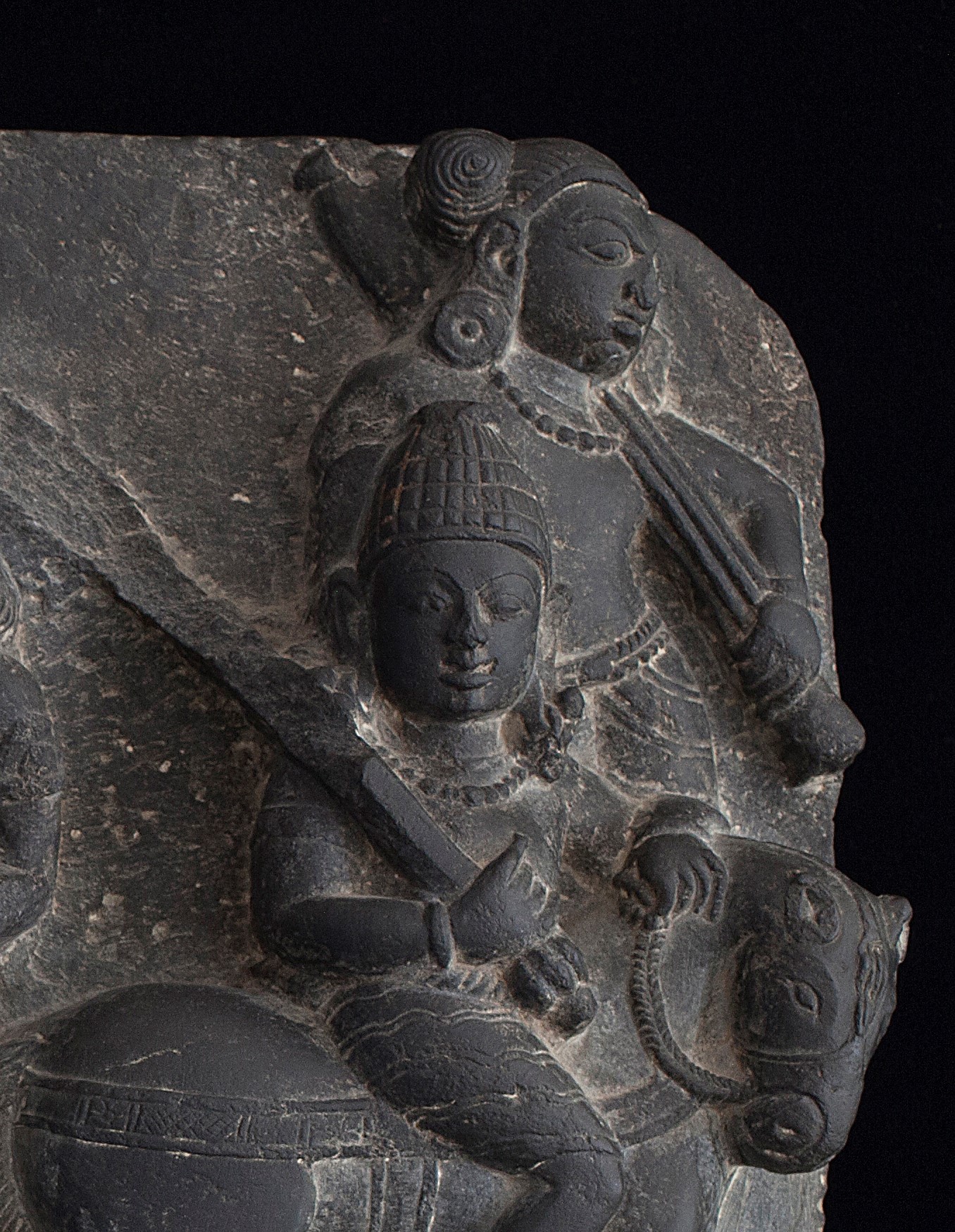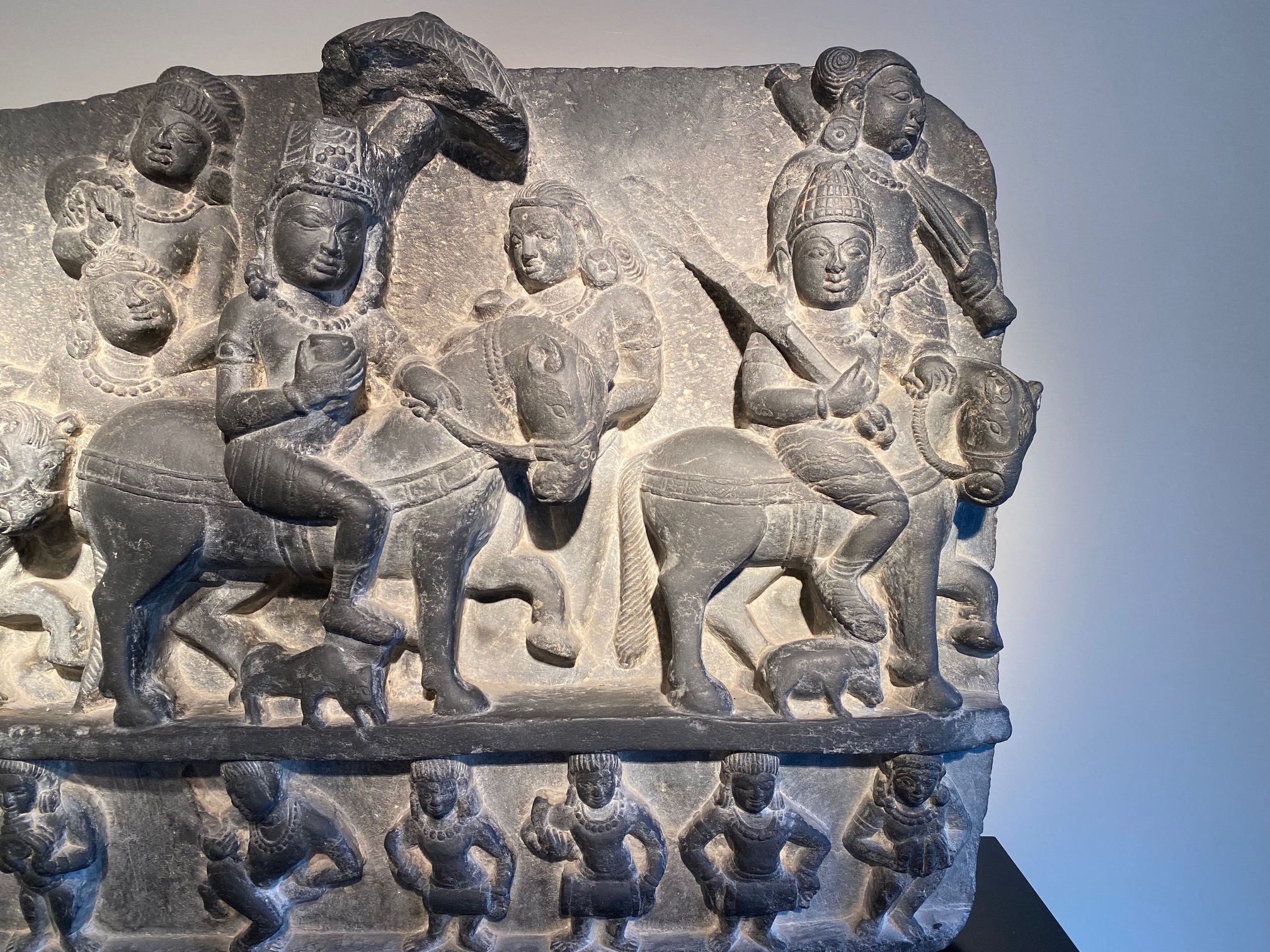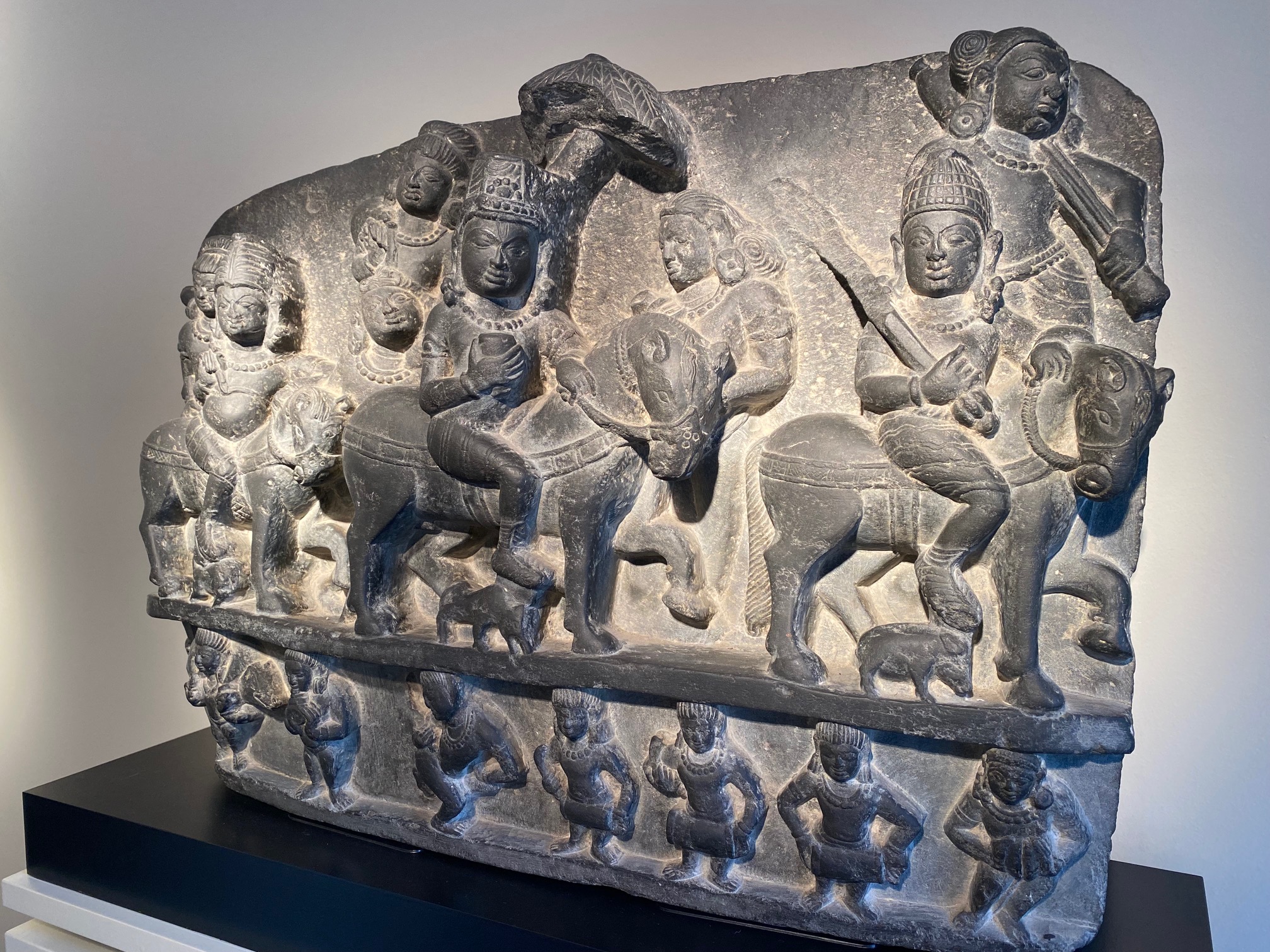



Northeast India, Bihar
Pala period, 11th century
Hard black basalt
L61 x H43 cm
Art Loss Register Certificate: S 00021601
Private collection, Canada
Collection Marcel Nies, Antwerp, 2009-2014
Published: The future Buddha, the cultural heritage of Asia, Marcel Nies Oriental Art, Antwerpen, 2009, pp.30-31
This relief depicts Revanta hunting, seated on a horseback, preceded and followed by Danda and Pingala, walking in the same direction. In the background are two of Revanta's attendants, one bearing a parasol, the other approaching the god with a wine jar in his hand. He wears a dhoti and a girdle and has high boots similar to those of his father Surya. One figure carries a bow and arrow, a number of animals are being trampled beneath the horses' hooves. In the lower register of the relief is a hunting scene, accompanied by dance and music. From left to right are a running deer, an attendant carrying a dead boar on his shoulders, a musician, a dancer, three drummers and a man playing cymbals.
Revanta is the youngest son of the Hindu sun god Surya and his wife Sanjna, a divine hunter and king of the Guhyakas. Revanta was a very popular figure in Bihar during the Pala period, several stone representations have been found. By the 10th century in Eastern India and Gujarat Revanta became the patron deity of horse traders, warriors and horses, and is thought to protect everyone against the dangers of the forest, which may explain his increasing popularity.
This relief was probably placed in a niche on the external wall of a temple dedicated to the sun god Surya. The elaborate rendering of the ornaments Revanta and his follower wear is typical for Pala sculpture of the 11th century. The relief, created with a sense of expressive dynamism and intented to be viewed frontally, is less ornate than later examples.
The Pala dynasty was a Buddhist dynasty that ruled in the eastern part of India from the 8th till the 12th century. They founded a large number of important sanctuaries, such as Bodhgaya, Nalanda and Kurkihar, they also promoted the university of Nalanda, which was one of the most prominent centers of learning in ancient India. They were known for their administrative and military reforms, as well as their support for the arts, literature and architecture.